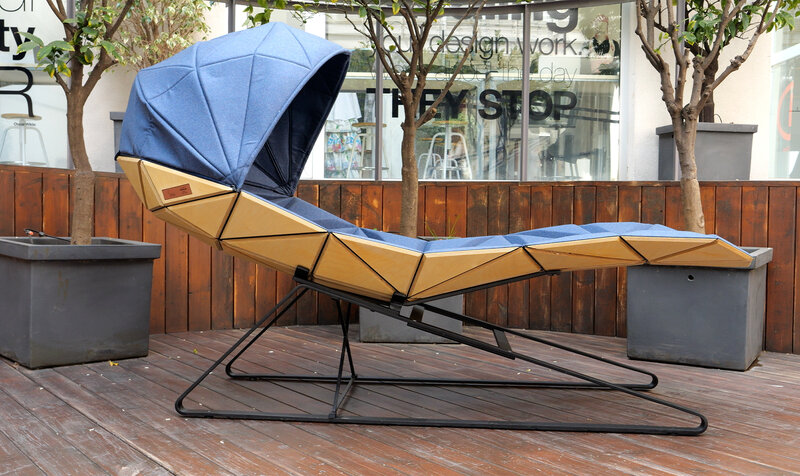Winner of the Innovation Norway Grant, the chair is made using recyclable and hard-wearing materials

Revolutionising rest through design
Date
25 April 2024
In 2018, after graduating from the Master in Interior Design for Commercial Spaces at IED Barcelona, Martin Y. Tsankov, together with his business partner Milen Kisov, founded the interior design company Studio Buenacasa. He had a clear focus: working on innovative and sustainable projects that could also contribute to the profession. The Power Nap Chair, one of the studio’s latest creations, brings together all these elements. Winner of the Innovation Norway Grant, this piece of furniture dedicated to the art of power napping, which aims to revolutionise rest for professionals, led them to participate in the prestigious Stockholm Furniture Fair in February.
Tell us about The Power Nap Chair. What does the term “furniture for well-being” mean?
Nowadays, we all have super dynamic lives, and to be good professionals, well-being is really important. The Power Nap Chair is a product designed to obtain a short rest — 15 or 20 minutes — that enables the user to recover physically and mentally and regain 100% productivity.
On the other hand, it is important to highlight that the chair is ergonomic: the feet are slightly elevated, which promotes blood circulation and is good for the heart. We were also inspired by the Navy Seals’ method, who take short naps because they have to be ready to perform at any given moment.
How does your design process ensure the sustainability of the product in all stages of development?
The chair was designed in consultation with a Norwegian company, who helped us to choose hard-wearing materials. Each part can also be disassembled and easily recycled.
How would you evaluate your participation in the Stockholm Furniture Fair?
We’re a start-up, and being alongside the best design companies that have 70 or 80 years’ experience, that have large teams and large budgets, was incredible. It motivated us to keep working even harder.
What would you highlight from your time at IED Barcelona and what lessons do you feel helped you grow the most as a designer?
The master’s degree I studied at IED was a really important stage of my life. Having the opportunity to work in a team and on projects for real clients is really important for a young designer. Further, the teachers that I had personally were very good, both as professionals and in their interactions with students. Many times, outside of classes, we talked about other projects that expanded my vision about design.
Are there any anecdotes you would like to share?
One of the funniest moments I experienced was during the Llum Barcelona project. We had to go and buy the materials to make concrete — which weigh a lot — to make moulds that weighed about a ton and a half, and we got up to our ears in dirt.
What advice would you give to current Interior Design students that you would have liked to have received?
I would tell them to observe their mentors very closely, and to study a lot; because even though the profession is difficult and requires a lot of work and dedication, it’s worth it.










